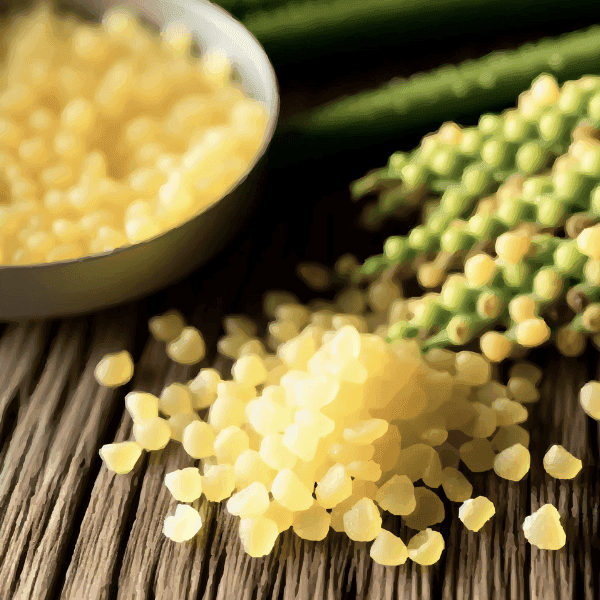
Candelilla Wax
Candelilla wax comes from the candelilla shrub, which is native to Mexico. It can be found in cosmetics, food, candles, and even some pharmaceuticals. The benefits of this natural wax are that it has a melting point around the middle of the natural waxes and that it is not water-soluble.
What is candelilla Wax?
Candelilla wax is a natural wax that comes from the leaves of the small Candelilla shrub. It’s a defense mechanism that protects it from the harsh heat of its natural habitat. You
can find it used in cosmetics like lip balms, lotions, food products, candles, and in some pharmaceuticals.
How it is made
Like many other waxes, there is a process that the raw material needs to go through to get the final product. First the leaves are harvested and boiled with a special acidic solution. The boiling helps release wax. It is then skimmed off the surface. The wax is now filtered to remove any plant matter. After this, the wax is purified, melted down again, and filtered. Once the wax reaches the desired smoothness the manufacturer requires, it is cooled until it turns into a solid and then is packaged.
About Candelilla Wax
Candelilla wax is not water soluble, but solvents like ethanol do work. With a melting point of 154°F-163°F, candelilla is right in the middle of natural waxes, as far as melting points. It requires more heat than beeswax, but less than carnauba.
Common ways to use Candelilla Wax
- Cosmetics
- Lotions
- Salves
- Deodorants
- Makeup
- Candles
- Food Products
- Gum
- Candy coating
Growing and Foraging Information
The candelilla plant is native to northern Mexico and the southwestern United States. The plant can be propagated through seeds or cuttings, although seeds may have low germination rates. Cuttings from mature plants are more commonly used. Spring is the best time to plant.
Safety Concerns
Drug Interaction: There are no known drug interactions. If you are on any prescription drugs, talk with the prescriber.
Breastfeeding and Pregnancy: There are no known counterindications.
Other Concerns: None
Select Studies About Candelilla Wax
This article discusses the melting points of candelilla wax and different extraction processes. It was discovered after comparing the standard extraction process (using sulfuric acid) to a more eco-friendly process (citric acid), that the more eco-friendly process was very different in its physicochemical properties and improvements in its properties when compared to the sulfuric acid extract. This shows that more eco-friendly processes can be used with favorable results.